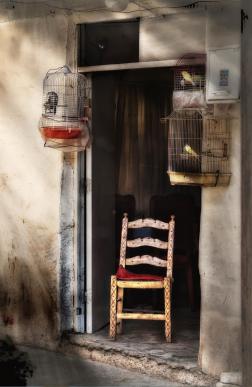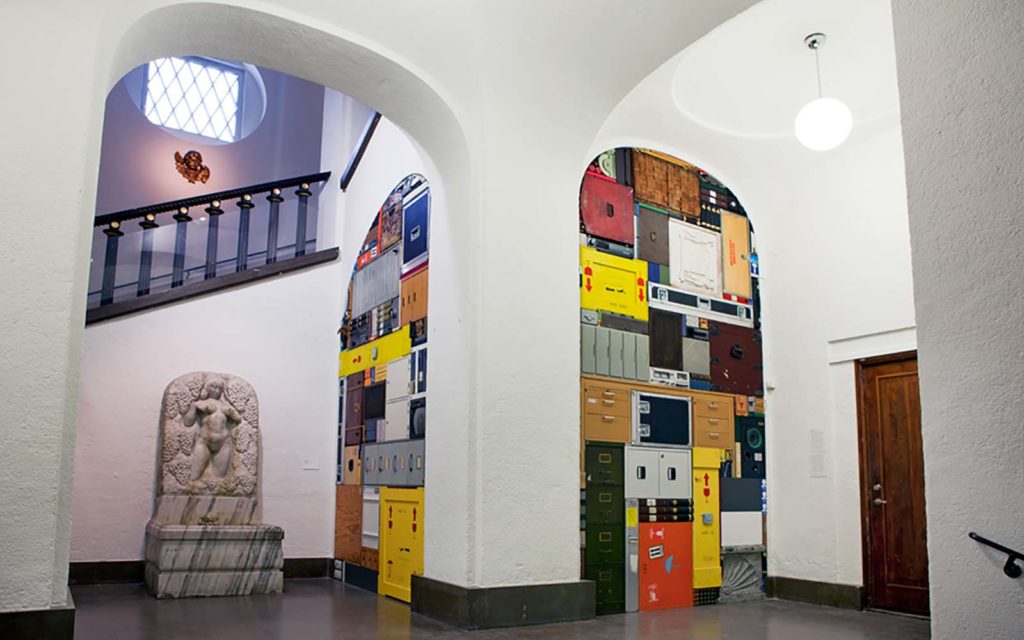The story goes like this; George Harrison wanted to write a song, unfortunately, the muse had gone for a walk on that particular day and wasn’t returning his calls. He decided to pick up a book at random, promising himself he would write a song about the first words he read. “Gently weeps” were the words, and While My Guitar Gently Weeps was created – on a very limited set of boundaries.

There is an assumption that creativity thrives on freedom but in fact the opposite is true. Without something to work against – to cause friction – there is no spark, there is no fire.
“Whether or not they’re created by an outside client or you yourself, a set of limitations is often the catalyst that sets creativity free,” says Scott McDowell, founder of the consulting and executive search firm, CHM Partners.
Swedish artist Michael Johansson uses the idea of boundaries and constraints quite literally. He takes used objects and re-purposes them into artistic projects. Working within a confined space is the essence of his work.
Boundaries and limitations can take on many forms; time and money being the most common, but surprising outcomes can develop in the face of adversity. The artist Phil Hensen had to completely change the way he worked due to a physical restriction which meant he could no longer draw fine, straight lines. He talks about his experiences and shares his story in this Ted talk; Embrace the shake.
“There are many real-life situations in which imposing severe constraints leads to an outpouring of creativity,” writes Tina Seelig, executive director of the Stanford Technology Ventures Program, in her book InGenius: A Crash Course on Creativity.
Language
From Haiku’s to Twitter, imposing a limit on language can have a great effect. In poetry or songwriting, where rules about rhythm and rhyme – to some extent – must be obeyed, writers are forced to become familiar with the music of language and build skills that could otherwise be undeveloped.
The founders of Twitter have led the way in terms of limited language and set off a domino effect of creativity. For example, Maureen Evans (@cookbook) uses Twitter to publish mini recipes, SMITH magazines asked writers to create six-word memoirs: “I was engaged for one day”…“I’m the careless man’s careful daughter”, and literary agents Curtis Brown together with Conville & Walsh recently launched pitch Friday #PitchCB, where writers are asked to produce a one-line pitch for their work.
Time and Money
Eric Ries, the co-founder of the online gaming company IMVU, believes that having restrictions creates a better product. That is, companies create a product that takes the least amount of time and money in order to get faster feedback from their customers. As Seelig notes, “This allows you to develop and improve your products much more quickly than when you use traditional engineering practices.”
Hate them or love them, deadlines work. Some of us view deadlines as stifling – even panic-inducing, but under the right circumstances deadlines can enhance your creativity. And let’s face it, without them, we’d never get anything finished.
Cash is a common constraint for many of us. But that’s not necessarily a bad thing. Seelig uses the example of the low-budget movie, Monty Python and the Holy Grail. She describes the scene where viewers hear the sound of horses in the distance. As the “horses” get closer, we see that it’s really a soldier banging coconuts together to mimic the sound of hooves. Funnier, cheaper and more memorable than real horses!
There is access to funding to make the process easier, speak to your WardWilliams Creative specialist about grants, investment schemes and other funding that may be available to you.
And above all embrace your boundaries.



